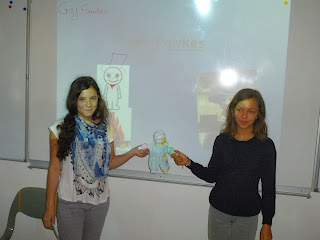The last Roman soldiers left Britain in AD 410, and then new people came in ships across the North Sea. Historians call them Anglo-Saxons.
The new settlers were a mixture of people from north Germany, Denmark and northern Holland. Most were Saxons, Angles and Jutes.
If we use the modern names for the countries they came from, the Saxons, were German-Dutch, the Angles were southern Danish, and Jutes were northern Danish.
Why did Anglo-Saxons invade Britain?
Historians are not sure why the Anglo-Saxons came to  Britain.
Britain.
Some sources say that the Saxon warriors were invited to come, to the area now know as  England, to help keep out invaders from
England, to help keep out invaders from  Scotland and
Scotland and  Ireland.
Ireland.
Another reason for coming may have been because their land
often flooded and it was difficult to grow crops, so they were looking
for new places to settle down and farm.
To know more about the Angle- Saxons' way of life :http://www.bbc.co.uk/schools/primaryhistory/anglo_saxons/anglo-saxon_life/
To revise for your test : do the following quiz (don't forget to do the quiz of each section !!)
http://www.bbc.co.uk/schools/primaryhistory/anglo_saxons/who_were_the_anglo-saxons/teachers_resources.shtml















